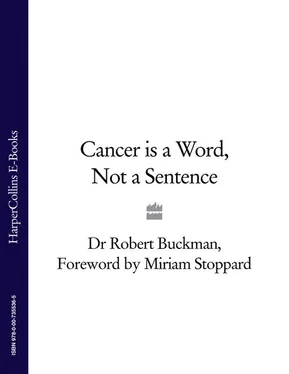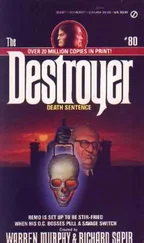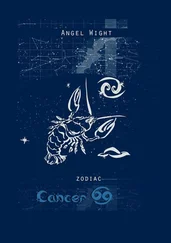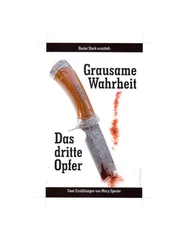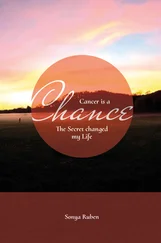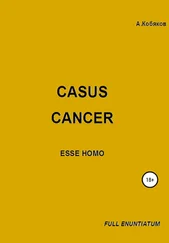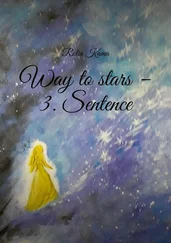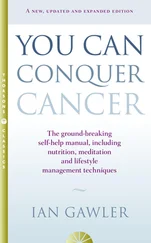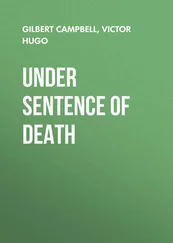That is what most people have in the backs of their minds, and that is why it is so difficult to cope with any cancer diagnosis. Even when you are told that the prognosis is good—let’s say for a small cancer of the breast that has not spread to the lymph nodes—you will most likely still have a deep-seated doubt, a tendency not to believe that news.
That’s why this book is necessary, and why I’ve given it such a specific title. The whole problem starts with the fact that we are discussing a word, a single word that (as you’ll see) lumps together over two hundred different diseases. Yet that word should not be the end of a conversation, it should be a beginning—it should be the start of a fact-finding mission. As you will learn in the rest of this book, what really matters to you is not simply the diagnosis itself, but many other aspects of your situation that are much more important and relevant to you and your future.
Questions such as these:
What specific disease—which of the two hundred different cancers—is it?
What does it actually mean for your future?
How does this particular cancer behave?
What are the treatment options?
By beginning to answer those questions you will start to get a picture of what is going on in your case, and that’s what you need in order to begin coping with your situation.
The word cancer is the start to finding out, as precisely as possible, and with more and more accuracy over time, what is going on. As the title of this book tells you from the outset, cancer is just a word. It’s not a sentence.
The map with the ‘You Are Here’ sticker
You need to get your sense of direction back, too.
A general sense of direction—knowing the way the land lies and the way things are going—helps you get back some feeling of control.
Most people—not everyone, but most—find that one of the really difficult aspects of a new cancer diagnosis is the feeling that they’ve lost control. You haven’t got a clear overall picture of the situation: you feel bewildered and ‘de-skilled’. To make matters worse, many of the new people that you meet in your medical team may not have the time to explain the big picture to you. Sometimes they do, and when that happens you’re lucky. But there is a lot to do and organise at the time of diagnosis, staging, and the start of treatment. And clinics are generally extremely busy places. In most cases the time to explain the overview simply isn’t there. That’s another reason why there seems to be a real need for this guidebook.
In a way, what I am doing here is creating a cancer-treatment map, like the ones you see in the entrances to shopping centres with a bright red ‘You Are Here’ sticker to give you a sense of direction. I hope that this book will provide you with your own bright red sticker and will, in a perplexing and complicated territory, give you some idea of where you are and where the various paths and options lead.
Most of the current books about cancer give you the relevant facts and usually discuss treatment options. Obviously you’re going to need that kind of information as well. But as you first come to grips with a diagnosis of one of the cancers, you need something else. You need a practical guide that matches your day-to-day experience.
This book is, I hope, precisely that. It is the first step-by-step ‘what-do-I-do-now’, practical guide specifically written to help you through those first few bewildering weeks and the various steps of diagnosis and treatment, and to provide simple, practical, everyday help in coping.
What you’ll find here is not a comprehensive compilation of cancer facts, biology, and treatment. Instead, you’ll find a clear and straightforward guide for use in your real world. It will show you what the diagnosis actually means, what the tests are all about, what the future depends on, how to judge the benefits of various treatment options and how to cope with the side effects of treatment and all the various uncertainties and ups and downs of follow-up. In simple and straightforward language this book explains what’s happening and how to cope with it.
You need something that shows you how this new and unfamiliar terrain is laid out, and gives you some sense of direction as you navigate your way through it.
When you’re lost in a forest, you don’t need a field guide to the trees. You need a map of the forest.
The bottom line at the top of the book
Right at the start, let me give you a few simple guidelines. I’ll explain more about them as we go along, but we all like a hint of the bottom line upfront, so here are the most important dos and don’ts:
| SOME IMPORTANT DO’S, SOME IMPORTANT DON’TS |
| Dotry to get a reasonable, general overview of your type of cancer. |
Don’trespond simply to the word ‘cancer’ as a universal and total signal of doom and gloom. |
| Doget a small amount of trustworthy current information: perhaps visit a few reputable cancer websites (see Appendix II on page 240). |
Don’tgo to the internet and collect hundreds of different views, opinions, home remedies and fringe medications. By and large if there really is something major going on, almost all the professionals know about it. |
| Doaccept, which means admit and acknowledge to yourself, any uncertainty about the diagnosis and/or treatment at this stage. Uncertainty is always unpleasant—and it’s easier to cope with if you acknowledge that fact. |
Don’tthink that things won’t change after you hear the first view of the diagnosis or treatment. Plans may well change as time goes on, so try to stay as flexible as possible. |
| Doask your medical team a few specific questions once you understand the general overview of your situation. |
Don’t—or try not to—ask the same questions too often. Two or three times are usually enough. Asking over and over again usually means that it’s difficult for you to accept the answers. |
| Doget a second opinion if you really think you need it. |
Don’tget a third opinion (or more!) if the second opinion is the same as the first. |
| Dothink about why you want to go to a complementary medicine remedy or clinic and what you expect. |
Don’tmake a major early investment (in time, money or hope) in complementary medicine or a clinic without thinking about it for a time and discussing it. |
| Dotake a few minutes to look at the ways you can talk to your medical team and your friends. |
Don’tshout at your friends and family, or blame them. (Or try not to, anyway.) It’s usually better to explain your feelings, rather than exhibit them, although we all have some moments when we can only vent. |
| Dotalk to your friends and family. |
Don’tfeel that you have to hold all your concerns and worries in until you know all the answers. |
| Dotell the people you like that you like them. Nobody minds being told nice things! |
Don’tcut yourself off from the people that you really like. We all tend to feel a bit uneasy and vulnerable when things aren’t going well or we are upset. True friends are people you can share those feelings with. |
| DoBreathe! With the word ‘cancer’ most people have a feeling that the roof will fall in tomorrow. This book is all about dispelling that illusion. |
Don’tPanic! The word ‘cancer’ causes in almost everyone a major sense of urgency and panic. In the vast majority of situations, even though it’s difficult to believe, there is plenty of time to get informed and make decisions. |
| Dospend a little bit of time every day doing something you really enjoy and thus look forward to. It can be anything, even watching a favourite TV programme or listening to a CD. |
Don’tsell the furniture! Which is the same thing as Don’t Panic—a motto that’s so important it’s worth saying twice. |
‘I keep on wondering…’
Читать дальше
